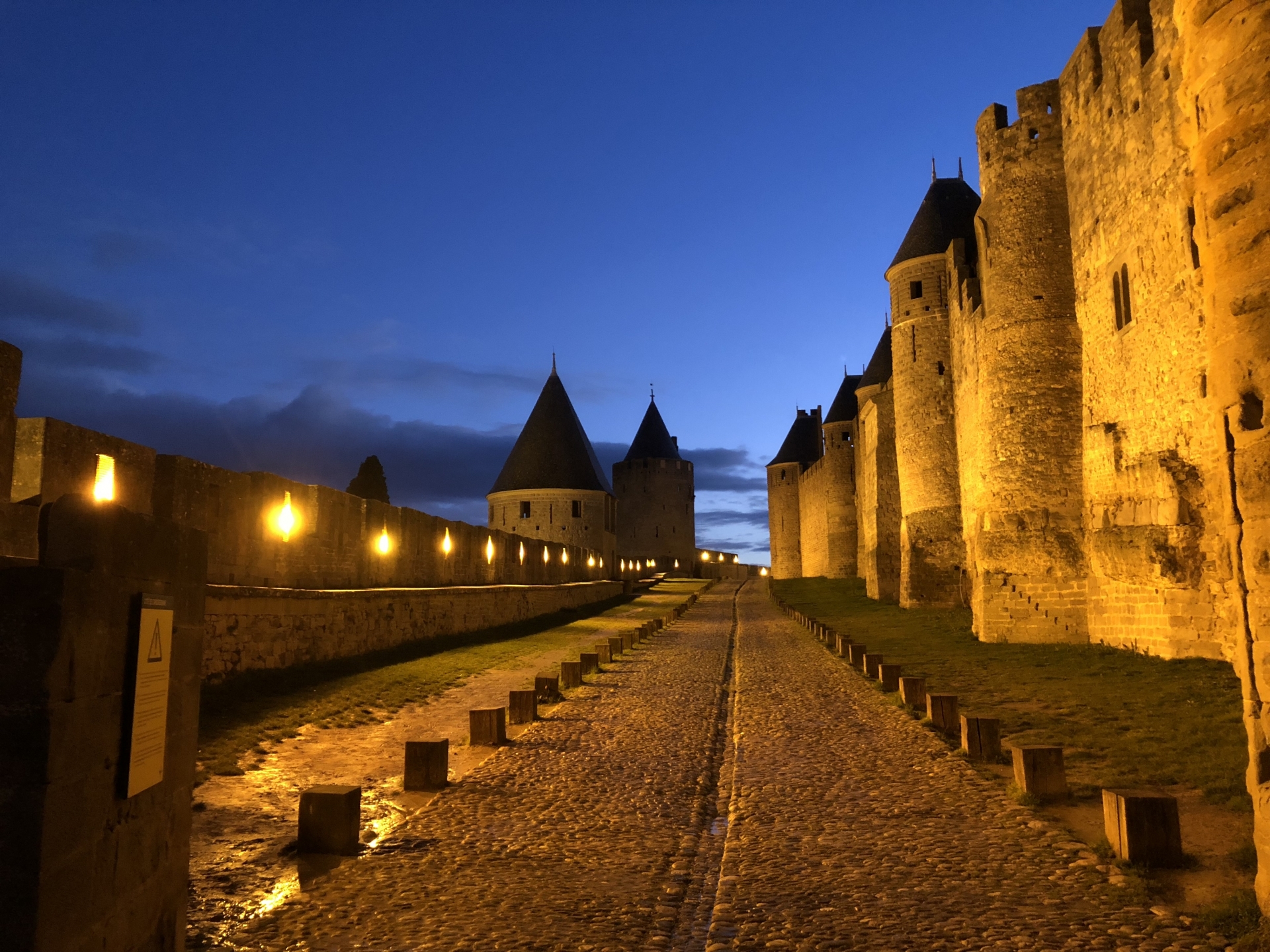Stone vs. shakes: The fundamental difference in castle DNA
I imagine many of you have seen the above image. It’s the formidable medieval fortress of Carcassonne in France, now a UNESCO World Heritage site and a hugely popular tourist destination. This site, which I had shamefully never seen before this research, sparked my interest in finding the fundamental differences between European and Japanese castles.
Anyone would immediately notice the basic building material difference: stone in European castles versus wood in Japanese ones. But the real difference lies in the DNA of the architecture. European castles were designed for impenetrable, static defense against siege weapons and mass armies. They incorporated large residential areas inside, surrounded by high, thick stone walls.
Japanese castles, conversely, were designed with a necessary weakness: they had to survive earthquakes. Their tall structures, built mostly of layered wood, employed flexible, non-load-bearing stone bases, allowing them to sway and absorb seismic shock. This geographical condition—the incessant threat of the earth shaking—forced a less visually dominating, yet structurally more resilient design.

The civil war divide: Why Japanese samurai abandoned their people
Now, let’s address a striking political difference: Why didn’t Japanese castles usually include a large residential area inside the inner walls? I looked it up, and the reason appears to lie in the fundamental difference in the character of warfare.
In medieval Europe, conflicts often escalated into total war where the general populace was the target of attack, hence the need for a castle to serve as a comprehensive refuge for the entire community.
During the Samurai age in Japan, however, conflicts were typically a form of civil war—localized fights between rival samurai clans. The general populace was, surprisingly, not the primary target of attack. While the samurai killed each other on the battlefield, the common people simply went about their daily lives outside the castle walls or battle areas. Therefore, the Japanese castle’s main purpose was strictly the defense of the ruling lord and his military, not the protection of the townspeople. It was a fortress of political power, not communal defense.
The cross-cultural mirror: Why I needed France to see Japan
What I found most interesting through this quick research is the profound impact of cultural components—such as political situations, climate, and geography—on something as concrete as castle architecture. Despite having the same basic purpose (defense against enemies), the shape of castles in Europe and Japan are totally distinct.
In that sense, our furniture will inevitably become unique and distinctly Japanese because it is made by Japanese craftspeople here in Japan using Japanese wood. The problem is that sometimes we, as humans, cannot recognize our own uniqueness. As the Japanese saying goes, we “can’t see the forest for the trees.”
This is why cross-cultural understanding is so vital. I, a resident of Hokkaido—a place with no ancient castles, only modern self-reliance—am amused to admit I needed the image of a formidable stone fortress in France to truly understand the subtle resilience and political history embedded in the wooden structures of Japan. It is a wonderfully human paradox that understanding the “other” is the only way to genuinely see the unique value of the “self.”

Shungo Ijima
He is travelling around the world. His passion is to explain Japan to the world, from the unique viewpoint accumulated through his career: overseas posting, MBA holder, former official of the Ministry of Finance.

